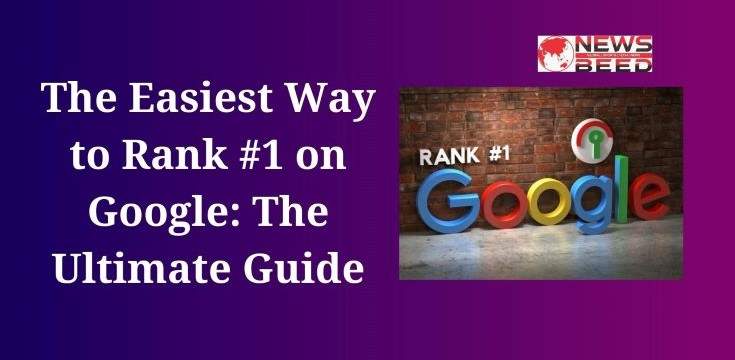Rank #1 on Google is a coveted position that can significantly boost your website’s visibility and traffic. Achieving this top spot requires a comprehensive and strategic approach, encompassing various aspects of SEO (Search Engine Optimization). In this guide, we’ll delve into the key factors and techniques that can help you secure the top ranking on Google.
Table of Contents
Toggle1. Understand Google’s Ranking Algorithm:
Google uses a complex algorithm to determine search rankings. While the exact details are proprietary, several known factors contribute to rankings. These include relevance, quality, and authority of content, website structure, user experience, backlinks, and more. Stay informed about algorithm updates to adjust your strategy accordingly.
2. Keyword Research:
Identify keywords relevant to your content and target audience. Utilize tools like Google Keyword Planner, SEMrush, or Ahrefs to find high-volume and low-competition keywords. Optimize your content around these keywords to increase visibility in search results.
3. On-Page SEO:
Optimize individual pages for search engines by incorporating target keywords into titles, meta descriptions, headers, and body content. Ensure a natural flow and readability for users while emphasizing SEO best practices.
4. Quality Content:
Google prioritizes high-quality, relevant content. Create valuable, engaging, and comprehensive content that addresses user queries. Long-form content often performs well, but prioritize quality over length. Regularly update and refresh your content to stay relevant.
5. Page Speed Optimization:
Page loading speed is a critical factor in user experience and SEO. Compress images, leverage browser caching, and minimize code to enhance your website’s loading speed. Tools like Google PageSpeed Insights can help identify areas for improvement.
Also, Read This: What is Digital Marketing in Hindi
6. Mobile Optimization:
With the increasing use of mobile devices, Google prioritizes mobile-friendly websites. Ensure your site is responsive and provides a seamless experience across various devices. Google’s Mobile-Friendly Test can help you assess your site’s mobile optimization.
7. Secure Website (HTTPS):
Google prefers secure websites with HTTPS encryption. Obtain an SSL certificate to secure data transmission between your website and users. This not only enhances security but also positively impacts search rankings.
8. Backlink Building:
Backlinks, or links from other reputable websites to yours, significantly influence rankings. Focus on building high-quality, relevant backlinks through guest posting, influencer outreach, and content marketing. Avoid low-quality or spammy backlinks, as they can harm your ranking.
9. Social Signals:
While the direct impact of social media signals on SEO is debated, a strong social media presence can indirectly boost your website’s visibility. Share your content on social platforms, encouraging engagement and potential backlinks.
10. User Experience (UX):
Google prioritizes websites that offer a positive user experience. Ensure easy navigation, clear calls-to-action, and a visually appealing design. Reduce bounce rates by providing valuable content and a seamless browsing experience.
11. Technical SEO:
Address technical aspects of your website, including crawlability, indexing, and XML sitemaps. Use Google Search Console to identify and fix crawl errors, and submit sitemaps to help search engines understand your site structure.
12. Local SEO:
If your business has a local presence, optimize for local searches. Create and optimize a Google My Business (GMB) listing, encourage customer reviews, and ensure accurate business information across online directories.
13. User Intent Optimization:
Understand user intent behind search queries and tailor your content accordingly. Google aims to deliver the most relevant results based on user intent, so align your content with the searcher’s needs.
14. Regular Monitoring and Adaptation:
SEO is an ongoing process. Regularly monitor your website’s performance using analytics tools. Track keyword rankings, user behavior, and other relevant metrics. Adapt your strategy based on insights and algorithm updates.
Also, Read This: Top 10 Most Popular Sports in India
15. Use Schema Markup:
Schema markup provides additional information to search engines, enhancing the display of your content in search results. Implement schema markup for key elements like reviews, events, and FAQs to improve visibility.
Conclusion:
Achieving the top spot on Google requires a holistic and ongoing approach to SEO. Focus on creating high-quality, relevant content, optimizing on-page elements, building authoritative backlinks, and providing an excellent user experience. Stay informed about algorithm updates and industry trends, and be prepared to adapt your strategy accordingly. Consistency, patience, and a commitment to delivering value to users are key to securing and maintaining the coveted rank #1 on Google.




